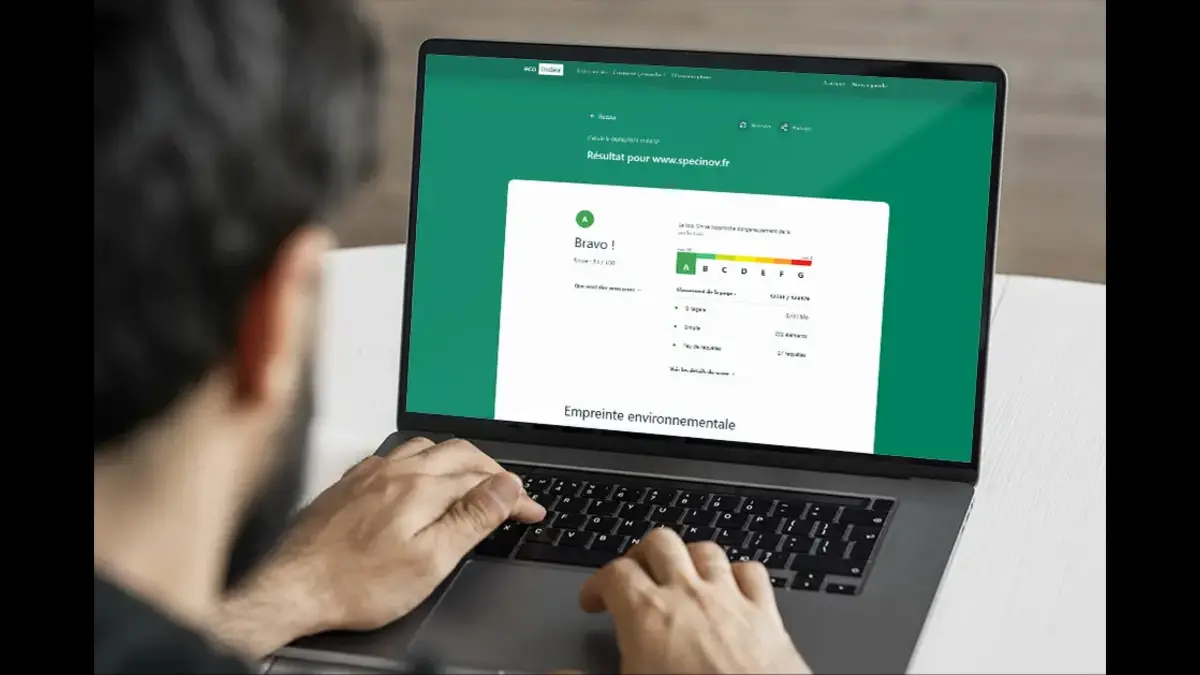Introduction to Ecoindex and its Importance
The digital world is ecoindex , but have you ever thought about its impact on the environment? As websites grow and evolve, so does their carbon footprint. Enter Ecoindex—a powerful tool designed to help website owners understand and improve their online sustainability.
In an age where climate awareness is more crucial than ever, optimizing your site for a lower carbon output isn’t just good practice; it’s essential. By analyzing the eco-impact of your digital presence, you can contribute positively to our planet’s health while enhancing user experience. Curious how it all works? Let’s dive into the fascinating realm of Ecoindex and discover how you can make a difference with every click!
Understanding Carbon Footprint
A carbon footprint measures the total greenhouse gas emissions produced directly or indirectly by an individual, organization, event, or product. It’s usually expressed in terms of carbon dioxide equivalents (CO2e).
Every click on a website contributes to energy consumption. This includes data storage, processing power, and network usage, each of which generates emissions.
When discussing digital activities like browsing or streaming videos, we also discwe’reuss their environmental impact. The more complex a site is—loaded with images and scripts—the more significant its digital footprint.
Understanding your carbon footprint helps identify areas for reduction. By making conscious choices in design and hosting services, websites can significantly lower their contributions to climate change.
Awareness leads to action. As individuals and businesses become more informed about their impacts online, they can adopt greener practices that benefit them and the planet.
How Ecoindex Measures Carbon Footprint
Ecoindex utilizes a comprehensive approach to measuring your website’s carbon footprint. It evaluates various factors contributing to energy consumption and emissions during site operation.
The tool examines elements like page size, requests made to servers, and the technologies used to build your site. It analyzes each component for its efficiency and sustainability.
Data is collected from fundamental user interactions, which helps provide an accurate representation of environmental impact. This means Ecoindex captures not just theoretical metrics but also practical usage.
After gathering this information, a score reflecting your sitsite’so-friendliness is assigned. A higher score indicates lower environmental impact, while a lower score signals areas needing improvement.
This scoring system allows web admins to effectively identify specific actions to enhance their green credentials. Businesses can make informed decisions toward reducing their digital carbon footprint by focusing on these critical areas.
Interpreting Your SitSite’soindex Score
Your Ecoindex score is a crucial indicator of your webwebsite’svironmental impact. It ranges from 0 to 100, with higher scores representing better performance.
When interpreting this score, look beyond just the number. Analyze the components contributing to it, such as energy consumption and resource usage. Each element can reveal areas for improvement.
A low score indicates that your site might use excessive resources or generate unnecessary traffic load. This could lead to increased carbon emissions associated with server operations.
Conversely, a high score means youyou’re the right track, but dondon’tt complacent. TheThere’sways room for enhancement in web efficiency.
Comparing your Ecoindex against competitors can also provide valuable insights. Understanding where you stand helps set realistic goals for sustainability efforts in the future.
Tips for Improving Your SitSite’srbon Footprint
Optimize your images. Large files can slow down your site and increase energy consumption. Use formats like WebP for better compression without sacrificing quality.
Reduce the number of elements on each page to minimize HTTP requests. Streamline design to load faster, resulting in lower carbon output.
Leverage caching solutions to store frequently accessed data. This reduces server load and improves speed, which is kinder to the environment.
Choose green hosting providers that use renewable energy sources. Supporting eco-friendly companies helps reduce overall emissions associated with web traffic.
Implement lazy loading techniques for images and videos. Content loads as needed, saving bandwidth and decreasing energy usage significantly.
Regularly audit your sitsite’srformance using tools like Ecoindex. Monitoring allows you to identify areas needing improvement while keeping sustainability goals in mind.
Case Study: Successful Companies Using Ecoindex
Patagonia, a leader in sustainable fashion, has embraced Ecoindex to assess its online environmental impact. By analyzing its webwebsite’srbon footprint, it identified areas for improvement and implemented changes that significantly reduced its digital emissions.
Another example is the European hotel chain Accor. They utilized Ecoindex metrics to optimize their booking platform. This minimized energy consumption and enhanced user experience through faster load times.
The tech giant Google has also made strides with Ecoindex assessments across various services. Their commitment to sustainability extends beyond data centers into the digital realm, showing measurable decreases in resources used by optimizing web performance.
These companies illustrate how integrating Ecoindex can bring tangible benefits while fostering a culture of environmental responsibility within their brands. Each success story inspires others looking to change the digital landscape positively.
The Impact of Reducing Your SitSite’srbon Footprint
Reducing your sitsite’srbon footprint can bring significant benefits beyond just environmental impact.
A lower carbon output often results in faster loading times. This enhances user experience, keeping visitors engaged and reducing bounce rates.
Search engines are increasingly prioritizing eco-friendly websites. Improving your Ecoindex score can boost your rankings and visibility online.
Moreover, this shift appeals to the growing base of environmentally conscious consumers. They prefer brands that demonstrate sustainability in their practices.
Cost savings also apply. Optimized websites tend to consume less energy, which can translate into lower hosting costs over time.
Adopting green strategies fosters a positive brand image. It positions your company as a leader in sustainability within your industry.
Conclusion
Understanding and managing our carbon footprint has never been more critical as we navigate an increasingly digital world. Ecoindex is vital for businesses and individuals seeking to gauge their environmental impact online. By providing a precise measure of how web practices contribute to greenhouse gas emissions, this platform empowers users to make informed decisions.
Analyzing your sitsite’soindex score can reveal hidden areas for improvement. Simple adjustments in website design, hosting choices, or content delivery can significantly reduce energy consumption. These changes benefit the planet and enhance user experience and site performance.
Numerous companies have already successfully embraced Ecoindex, showcasing that sustainability doedoesn’tve to compromise profitability or usability. Their stories illustrate the positive ripple effects of prioritizing eco-friendliness on brand image and customer loyalty.
Reducing your webwebsite’srbon footprint isnisn’tst beneficial—it’it’ssential for fostering a sustainable future. As consumers grow more environmentally conscious, aligning with eco-friendly principles can set you apart from competitors while contributing positively to global efforts against climate change.
Taking steps toward improving your Ecoindex score is a responsible choice and an innovative business strategy that resonates with todtoday’slues-driven market dynamics. Embrace this journey towards sustainability; every small action contributes significantly over time.
You may also read
Block and News: Exploring the Future of Cryptocurrency and DeFi in Japan


